- Choosing the Right Epiphyllum Varieties
- Size
- Flower Color
- Growth Habit
- Recommended Varieties
- Light Requirements for Epiphyllum Succulents
- Tips for providing the right amount of light:
- Watering and Humidity Tips for Epiphyllum Succulents
- 1. Watering
- 2. Humidity
- Soil and Potting Mix for Epiphyllum Succulents
- 1. Well-Draining Soil
- 2. Organic Matter
- 3. pH Level
- 4. Container Size
- 5. Repotting
- Fertilizing Techniques for Epiphyllum Succulents
- 1. Choose the right fertilizer
- 2. Fertilize during the growing season
- 3. Follow the package instructions
- 4. Dilute the fertilizer
- 5. Apply fertilizer to damp soil
- 6. Avoid fertilizing newly planted or repotted epiphyllums
- 7. Fertilize less during the dormant season
- 8. Supplement with organic matter
- 9. Monitor for signs of nutrient deficiencies
- Propagation Methods for Epiphyllum Succulents
- 1. Stem Cuttings
- 2. Leaf Cuttings
- 3. Division
- 4. Grafting
- Common Pests and Diseases of Epiphyllum Succulents
- Pests
- Diseases
- Q&A:
- How often should I water my Epiphyllum succulent?
- Can Epiphyllum succulents tolerate direct sunlight?
- What is the best soil mix for Epiphyllum succulents?
- How do I propagate Epiphyllum succulents?
- Do Epiphyllum succulents require any special care during winter?
- Video: If You Do This Your Succulent Will NEVER Thrive
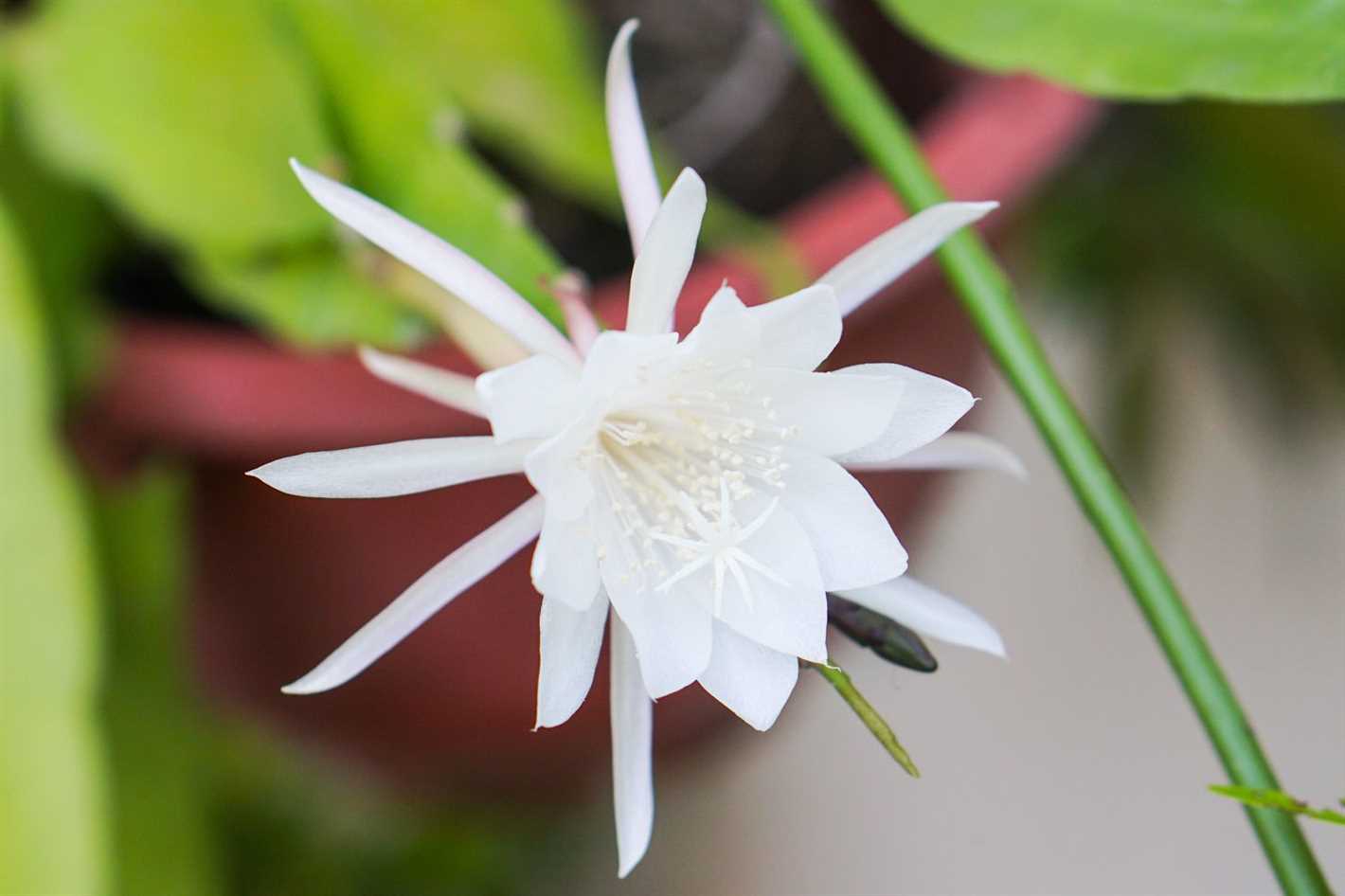
Epiphyllums, also known as orchid cacti, are stunning succulent plants that can add a touch of beauty to any home. Native to the rainforests of Central and South America, these unique plants thrive in warm and humid environments. With the right care and attention, you can successfully grow and enjoy these exotic plants in your own home.
One of the most important aspects of epiphyllum care is providing the proper growing conditions. These succulents prefer bright but indirect light, so it’s best to place them near a window with filtered sunlight. They can also tolerate some shade, but be careful not to expose them to direct sunlight for extended periods, as it can lead to sunburn. Additionally, epiphyllums thrive in well-draining soil, so make sure to use a mix specifically designed for cacti and succulents.
Another crucial aspect of epiphyllum care is watering. These plants prefer to be kept evenly moist but not overly saturated. Water them thoroughly when the top inch of soil feels dry to the touch, and make sure to allow any excess water to drain out of the pot. Avoid overwatering, as it can lead to root rot and other issues. During the winter months, when epiphyllums enter a period of dormancy, reduce watering frequency to prevent moisture-related problems.
Epiphyllums are also sensitive to changes in temperature and humidity. These plants thrive in temperatures between 65 and 75 degrees Fahrenheit (18 to 24 degrees Celsius). They also appreciate slightly higher humidity levels, so consider placing a tray of water near the plant or using a humidifier to create the ideal environment. It’s important to keep epiphyllums away from drafts and sudden temperature fluctuations, as they can cause stress and damage to the plant.
By following these tips and tricks for epiphyllum care, you can ensure that your succulent thrives and flourishes in your home. With their stunning flowers and unique appearance, epiphyllums are sure to be a standout addition to any plant collection.
Choosing the Right Epiphyllum Varieties
Epiphyllums, also known as orchid cacti, are a diverse group of succulent plants that come in many different varieties and colors. When choosing an Epiphyllum variety to grow at home, it’s important to consider factors such as the plant’s size, flower color, and growth habit.
Size
Epiphyllums can vary widely in size, ranging from small, compact varieties to large, sprawling ones. Consider the space you have available for your plant, as well as your personal preference for plant size. Smaller varieties are well-suited for windowsills or hanging baskets, while larger varieties may require more room to grow.
Flower Color
One of the most beautiful aspects of Epiphyllums is their stunning flowers. These plants produce large, showy blooms in a wide range of colors, including white, pink, red, yellow, and purple. Consider the color scheme of your home or garden when choosing an Epiphyllum variety to ensure it will complement your surroundings.
Growth Habit
Epiphyllums can have different growth habits, ranging from upright to trailing. Some varieties have long, thin stems that hang down, while others have more compact, bushy growth. Consider the style you prefer and how it will fit in with your existing plants and garden design.
Recommended Varieties
Here are a few popular Epiphyllum varieties that are well-suited for home cultivation:
- Epiphyllum anguliger: This variety, also known as the “Fishbone Cactus,” features unique foliage that resembles fishbones. It produces beautiful white flowers with a pleasant fragrance.
- Epiphyllum oxypetalum: Commonly known as the “Night-Blooming Cereus,” this variety is famous for its large, white blooms that open at night. It has a trailing growth habit and is perfect for hanging baskets.
- Epiphyllum hookeri: Often called the “Queen of the Night,” this variety has deep purple flowers that bloom at night and fade during the day. It has a trailing growth habit and is a great choice for a hanging basket or trellis.
These are just a few examples of the many Epiphyllum varieties available. Take some time to explore different options and choose the ones that best suit your preferences and growing conditions.
| Variety | Size | Flower Color | Growth Habit |
|---|---|---|---|
| Epiphyllum anguliger | Medium | White | Trailing |
| Epiphyllum oxypetalum | Large | White | Trailing |
| Epiphyllum hookeri | Medium | Purple | Trailing |
Remember to provide your Epiphyllums with the right care and growing conditions to ensure they thrive and produce gorgeous blooms year after year.
Light Requirements for Epiphyllum Succulents
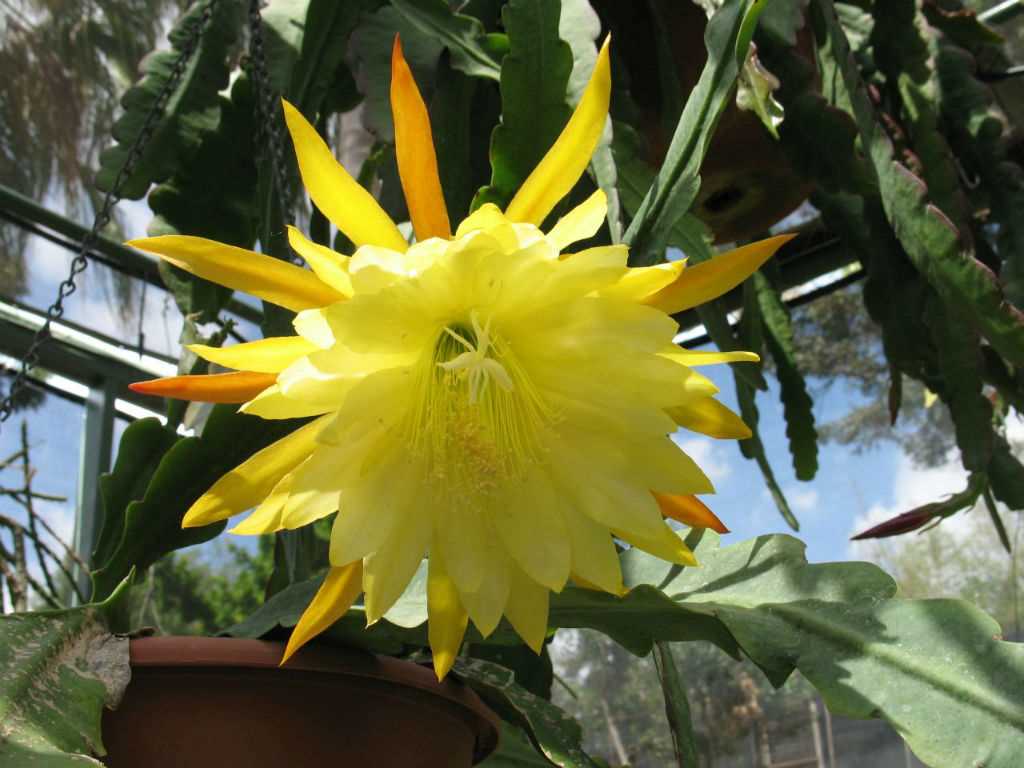
Epiphyllum succulents require bright but indirect light in order to thrive. They are native to tropical rainforests and are accustomed to filtered sunlight. Excessive direct sunlight can burn the leaves of these delicate plants, so it is best to provide them with bright, indirect light.
When it comes to positioning your Epiphyllum succulents, you can place them near a window that provides bright, filtered light. East or west-facing windows are often suitable for these plants. Avoid placing them directly in front of a south or southwest-facing window, as the intense afternoon sun can be too harsh for them.
If you don’t have a suitable window with filtered light, you can also grow epiphyllum succulents under fluorescent lights. Position the lights about 12-18 inches above the plants for about 14-16 hours a day. This will provide them with the necessary amount of light for healthy growth.
Tips for providing the right amount of light:
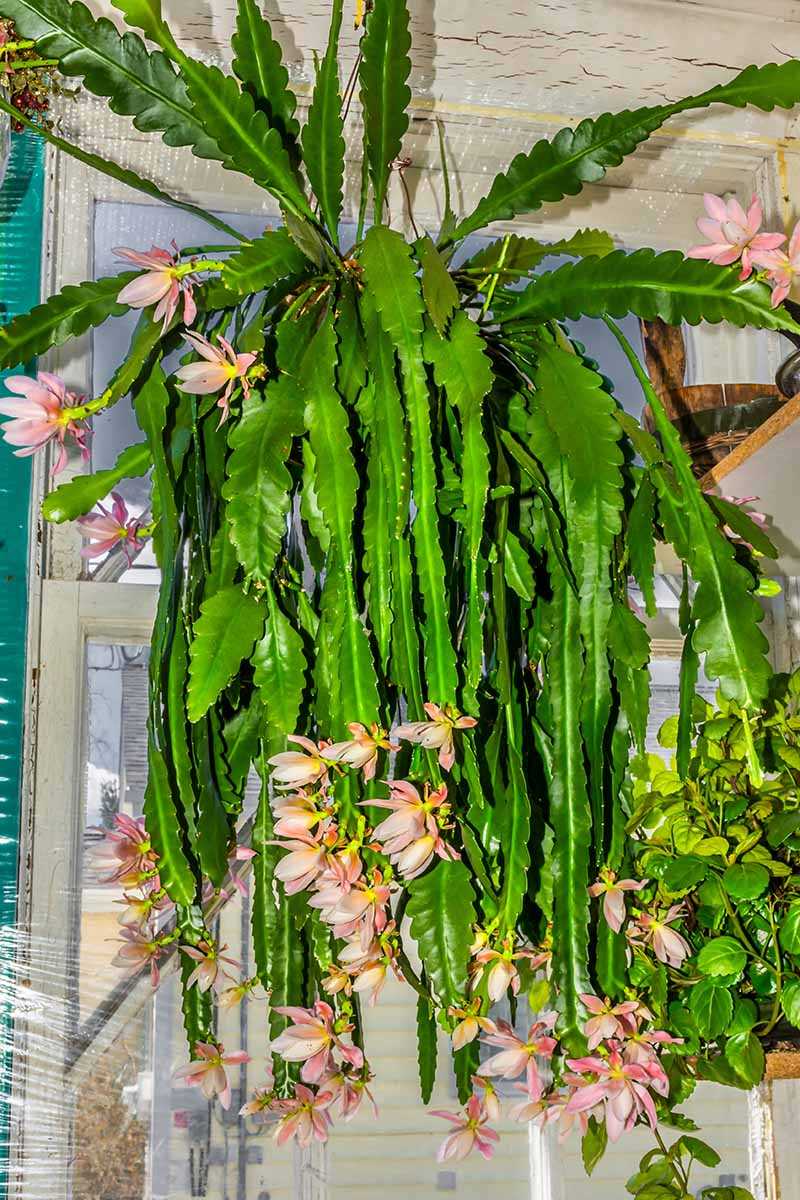
- Observe your plants for signs of too much or too little light. Too much light can cause yellowing or brown spots on the leaves, while too little light can lead to weak growth and stretching.
- If your Epiphyllum succulents aren’t flowering, it may be a sign that they aren’t receiving enough light. Consider repositioning them to a brighter spot.
- Avoid sudden changes in lighting conditions, as this can cause stress to the plants. If you need to move your epiphyllum succulents to a different spot, do it gradually over a period of a few days.
Overall, paying attention to the light requirements of your Epiphyllum succulents is essential for their well-being. Providing them with the right amount of bright, indirect light will help them thrive and reward you with beautiful blooms.
Watering and Humidity Tips for Epiphyllum Succulents
Proper watering and humidity are crucial for the health and growth of epiphyllum succulents. Follow these tips to ensure your epiphyllums thrive:
1. Watering
- Epiphyllum succulents prefer well-draining soil. Use a potting mix specifically formulated for cacti and succulents to ensure proper drainage.
- Water your epiphyllums deeply but infrequently. Allow the soil to dry out between waterings to prevent root rot. Test the moisture level by sticking your finger about an inch deep into the soil.
- During the active growing season (spring and summer), water your epiphyllums once every 7-10 days. Reduce the frequency to once every 2-3 weeks during the dormant period (fall and winter).
- Water the soil directly, avoiding the leaves and stems. Wet foliage can lead to fungal diseases.
- If you live in a humid climate, adjust the watering frequency accordingly. Epiphyllums might require less frequent watering in high humidity.
2. Humidity
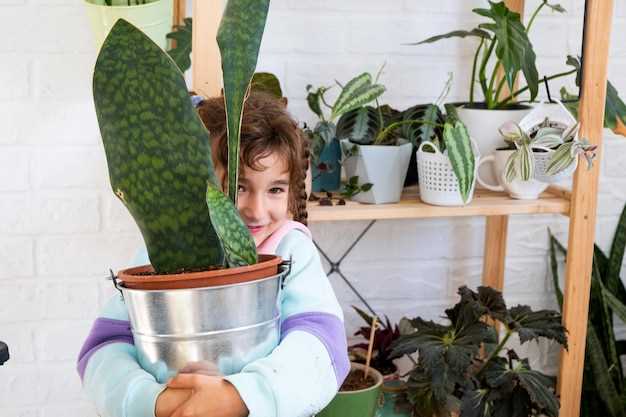
- Epiphyllum succulents prefer a moderate level of humidity. Aim for around 40-60% humidity, which mimics their natural habitat in tropical or subtropical regions.
- If your environment is too dry, consider using a humidifier or placing a tray of water near the plants to increase humidity.
- Avoid misting the leaves of epiphyllums, as this can promote fungal diseases. Instead, focus on maintaining a consistent level of overall humidity.
By following these watering and humidity tips, you can provide the ideal conditions for your epiphyllum succulents to thrive and display their beautiful flowers.
Soil and Potting Mix for Epiphyllum Succulents
Choosing the right soil and potting mix for your epiphyllum succulents is essential for their overall health and growth. The right mix will provide the necessary nutrients, drainage, and aeration to support their unique needs.
1. Well-Draining Soil
Epiphyllum succulents prefer a well-draining soil mix that allows excess water to drain away quickly. This helps prevent root rot and ensures that the roots are not sitting in overly moist conditions.
A good mix can be created by combining equal parts of potting soil, perlite, and coarse sand. This mixture helps create air pockets in the soil, facilitating better drainage. Alternatively, you can find pre-made cactus or succulent soil mixes available in most garden centers.
2. Organic Matter
Including organic matter in the soil mix is beneficial for epiphyllum succulents. It helps retain moisture while also providing some nutrients. Organic matter can be added in the form of well-rotted compost or leaf mold.
Adding organic matter also improves the structure of the soil over time, making it easier for the roots to grow and spread. However, it is important not to overdo it as too much organic matter can retain too much moisture and lead to root rot.
3. pH Level
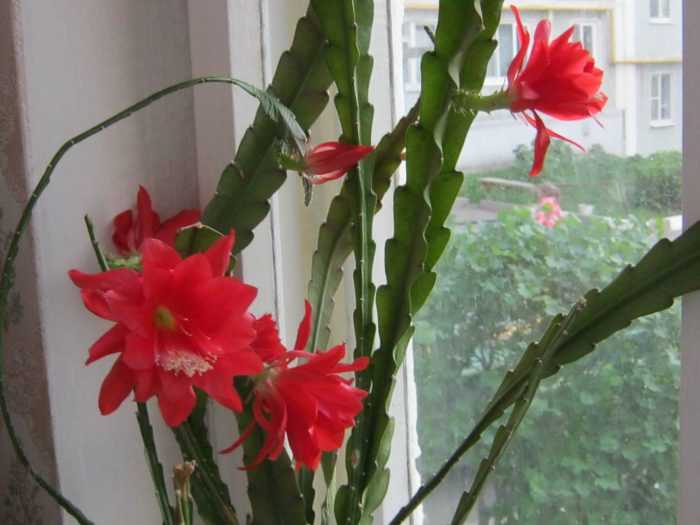
Epiphyllum succulents prefer a slightly acidic to neutral pH level. A pH range between 6 and 7 is ideal for their growth and overall health. You can test the pH level of your soil using a soil testing kit, which is available at most garden centers.
If the pH level is too high or too low, you can adjust it by adding soil amendments such as sulfur or limestone. However, it is best to choose a potting mix that already has a suitable pH level to avoid the hassle of adjusting it later.
4. Container Size
When selecting a container for your epiphyllum succulents, choose a pot that is slightly larger than the root ball. This allows room for the roots to grow and prevents the soil from getting too compacted over time.
A container with drainage holes is crucial to ensure that excess water can escape and prevent waterlogged soil. If you prefer using decorative pots without drainage holes, it is important to place a layer of gravel or broken pottery at the bottom to create a drainage layer.
5. Repotting
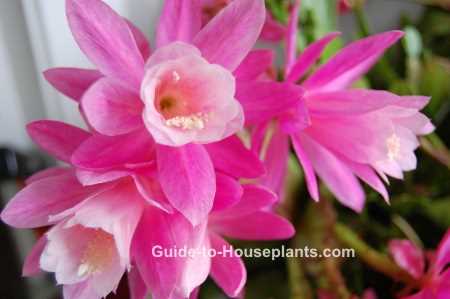
Epiphyllum succulents typically need to be repotted every 2-3 years, or when their current container becomes too small and overcrowded. Repotting allows the plant to have fresh soil and promotes healthy growth.
When repotting, gently remove the plant from its current container and carefully loosen the root ball. Place it in a slightly larger container and fill in the gaps with fresh potting mix. Do not bury the plant’s stem too deeply as it can lead to rotting.
Remember to water the newly repotted epiphyllum succulent sparingly for the first few weeks until it establishes in its new container.
By using the right soil and potting mix for your epiphyllum succulents, you can provide them with the best conditions for growth, leading to healthy and vibrant plants.
Fertilizing Techniques for Epiphyllum Succulents
Fertilizing your epiphyllum succulents can help promote healthy growth and beautiful blooms. Here are some techniques to consider:
1. Choose the right fertilizer
- Look for a balanced fertilizer with a ratio of nitrogen (N), phosphorus (P), and potassium (K) such as 10-10-10 or 14-14-14.
- Alternatively, you can use a specialized succulent fertilizer that is formulated specifically for cacti and other succulents.
2. Fertilize during the growing season
Epiphyllums are actively growing during the spring and summer months. This is the best time to fertilize them to give them a nutrient boost for healthy growth.
3. Follow the package instructions
Always read and follow the instructions on the fertilizer package. Different fertilizers may have different application rates, so it’s important to apply the correct amount for your epiphyllum succulents.
4. Dilute the fertilizer
Most fertilizers need to be diluted with water before application. Follow the recommended dilution ratio to avoid over-fertilizing your epiphyllums, which can lead to nutrient burn.
5. Apply fertilizer to damp soil
Water your epiphyllum succulents before applying fertilizer. This helps distribute the nutrients evenly and prevents the roots from getting burned.
6. Avoid fertilizing newly planted or repotted epiphyllums
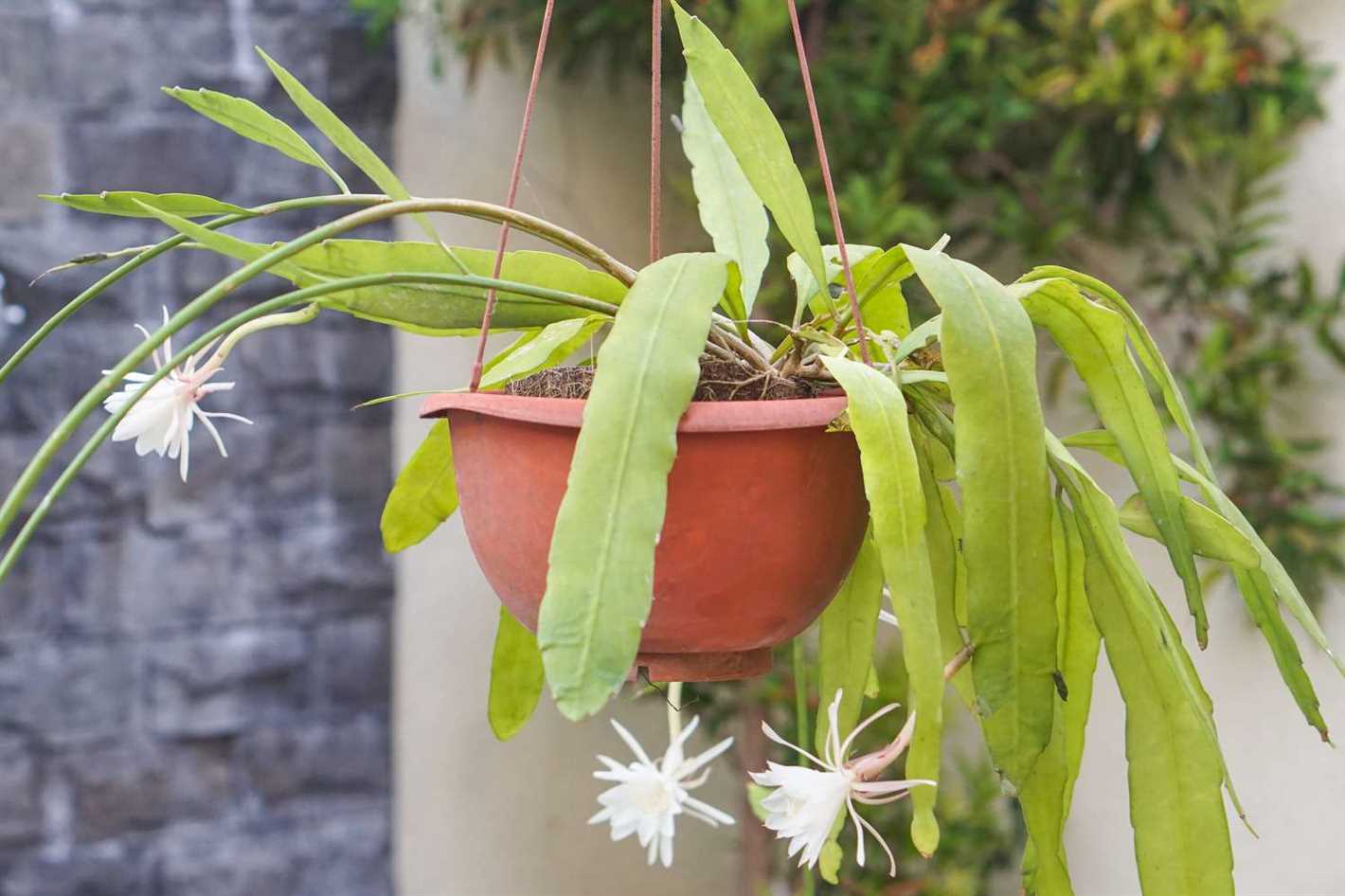
Give your newly planted or repotted epiphyllums some time to acclimate before fertilizing them. Wait at least a month or two before applying fertilizer to allow the roots to establish and minimize the risk of root burn.
7. Fertilize less during the dormant season
During the fall and winter months, epiphyllums enter a dormant period where they require less water and nutrients. Reduce the frequency of fertilization or stop fertilizing altogether during this time.
8. Supplement with organic matter
In addition to regular fertilization, you can provide extra nutrients to your epiphyllum succulents by supplementing with organic matter. This can include compost, well-rotted manure, or worm castings. Apply these organic materials on top of the soil and gently work them into the top layer.
9. Monitor for signs of nutrient deficiencies
Keep an eye on your epiphyllum succulents for any signs of nutrient deficiencies, such as yellowing or stunted growth. Adjust your fertilization routine accordingly to address any deficiencies.
| Nutrient Deficiency | Signs | Remedy |
|---|---|---|
| Nitrogen | Pale or yellow leaves, weak growth | Use a fertilizer with a higher nitrogen content |
| Phosphorus | Purple or reddish leaves, poor blooming | Use a fertilizer with a higher phosphorus content |
| Potassium | Weak stems, scorched leaf edges | Use a fertilizer with a higher potassium content |
By following these fertilizing techniques, you can ensure that your epiphyllum succulents receive the nutrients they need for optimal growth and vibrant blooms.
Propagation Methods for Epiphyllum Succulents
Epiphyllum succulents can be propagated through various methods. Here are some common propagation techniques:
1. Stem Cuttings
The most popular method of propagating epiphyllum succulents is through stem cuttings. Follow these steps:
- Choose a healthy stem from the parent plant.
- Using a sharp, sterilized knife or scissors, cut a section of the stem that is about 4-6 inches long.
- Leave the cutting to dry for a few days until the cut end calluses over.
- Plant the cutting in well-draining soil and keep it in a warm, bright location.
- Water the cutting sparingly until it develops roots, then gradually increase the watering.
2. Leaf Cuttings
Epiphyllum succulents can also be propagated from leaf cuttings, although this method is not as common. Here’s how:
- Select a healthy leaf from the parent plant.
- Remove the leaf from the stem by gently twisting it off.
- Leave the leaf to dry for a few days until the cut end calluses over.
- Place the leaf on top of well-draining soil and lightly press it down so that it makes good contact.
- Mist the leaf occasionally to provide moisture.
- After some time, small plantlets should develop at the base of the leaf.
3. Division
Another propagation method for epiphyllum succulents is division, which involves separating the clumps or offsets from the parent plant. Follow these steps:
- Gently remove the parent plant from its pot.
- Locate the offsets or clumps that have developed separate root systems.
- Carefully separate the offsets from the parent plant, ensuring each has its own set of roots.
- Plant the offsets in individual pots or in a new location in the garden.
- Water the newly planted offsets and keep them in a warm, bright location.
- Continue regular care for the new plants as they establish themselves.
4. Grafting
Grafting is a more advanced propagation technique that involves attaching a section of an epiphyllum succulent to the rootstock of another plant. This method is often used to combine the desirable traits of two different varieties. It is best to learn grafting techniques from experienced growers or resources dedicated to grafting.
Remember to be patient when propagating epiphyllum succulents, as they may take some time to establish and grow new roots or plantlets. With proper care and attention, you can successfully propagate these beautiful succulents and expand your collection.
Common Pests and Diseases of Epiphyllum Succulents
While epiphyllum succulents are generally resilient and easy to care for, they can still be susceptible to certain pests and diseases. Recognizing and addressing these issues promptly is crucial to ensure the health and vitality of your plants.
Pests
1. Mealybugs: Mealybugs are small, soft-bodied insects that feed on plant sap. They appear as white, cottony masses on the stems and leaves. To control mealybugs, you can use insecticidal soap or a solution of water and dish soap to gently wipe them away. Alternatively, introducing natural predators, such as ladybugs, can help keep their population in check.
2. Aphids: Aphids are tiny insects that come in various colors, such as green, black, or brown. They tend to gather in clusters on the undersides of leaves and feed by sucking sap. Insecticidal soap or neem oil can be used to control aphids. Pruning heavily-infested areas and disposing of them can also help prevent the spread of these pests.
3. Spider Mites: Spider mites are microscopic pests that can cause significant damage to epiphyllums. They typically leave small webs on the plant and feed on the sap, causing yellowing and wilting of the leaves. Regularly misting the plants and using insecticidal soap or neem oil can help control spider mite infestations. Avoid over-watering, as spider mites thrive in humid conditions.
Diseases
1. Root rot: Over-watering and poorly-draining soil can lead to root rot in epiphyllums. This fungal disease causes the roots to rot and eventually leads to wilting and yellowing of the leaves. To prevent root rot, ensure that the soil is well-draining and only water the plants when the top inch of the soil feels dry.
2. Leaf spot: Leaf spot is a fungal disease characterized by brown or black spots on the leaves. It is usually caused by over-watering, poor air circulation, or high humidity. To prevent leaf spot, avoid getting the leaves wet during watering, improve ventilation around the plants, and maintain a moderate humidity level.
3. Stem rot: Stem rot is a bacterial or fungal disease that affects the stems of epiphyllums, causing them to become soft and mushy. This disease is often a result of over-watering or excessively humid conditions. To prevent stem rot, ensure good air circulation around the plants and water them sparingly, allowing the soil to dry out between waterings.
Regularly inspecting your epiphyllum succulents for any signs of pests or diseases and taking prompt action can help keep them healthy and thriving. Providing the right growing conditions and practicing good plant care can also minimize the risk of these issues occurring.
Q&A:
How often should I water my Epiphyllum succulent?
Epiphyllum succulents require watering once a week during the growing season, and less frequently during the dormant period. It is important to allow the soil to dry out between waterings to prevent overwatering.
Can Epiphyllum succulents tolerate direct sunlight?
No, Epiphyllum succulents prefer bright, indirect sunlight. They can tolerate some morning sun or filtered light, but direct sunlight can scorch their leaves.
What is the best soil mix for Epiphyllum succulents?
The best soil mix for Epiphyllum succulents is a well-draining mix that is rich in organic matter. A mix of potting soil, perlite, and sand or pumice works well. Avoid heavy clay soils that can retain too much moisture.
How do I propagate Epiphyllum succulents?
Epiphyllum succulents can be propagated through stem cuttings. Take a cutting of a healthy stem, allow the cut end to callus over for a few days, then place it in moist soil. Keep the soil lightly moist until roots form.
Do Epiphyllum succulents require any special care during winter?
During the winter, Epiphyllum succulents enter a dormant period. They require less frequent watering, and it is important to keep them in a cool location with reduced light. This will help promote blooming in the spring.
Video:
If You Do This Your Succulent Will NEVER Thrive







